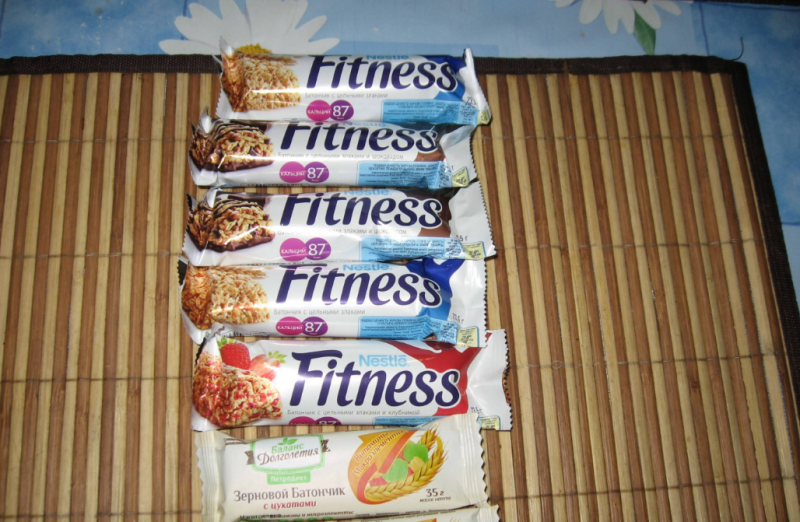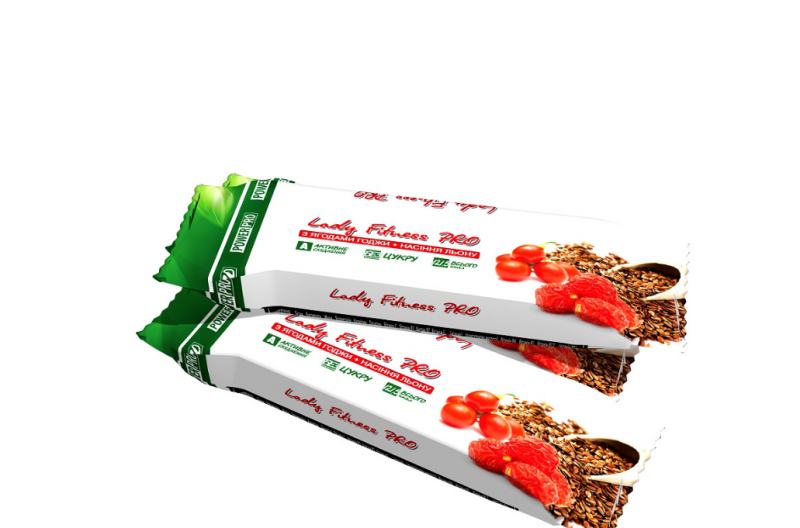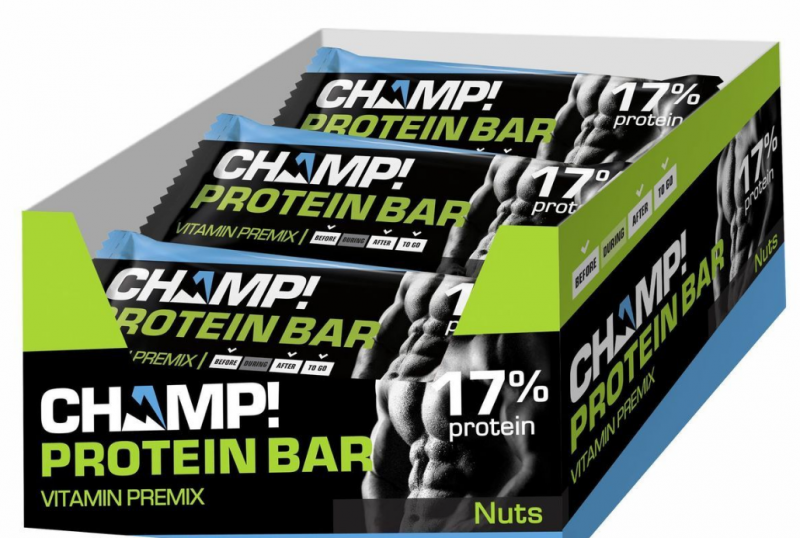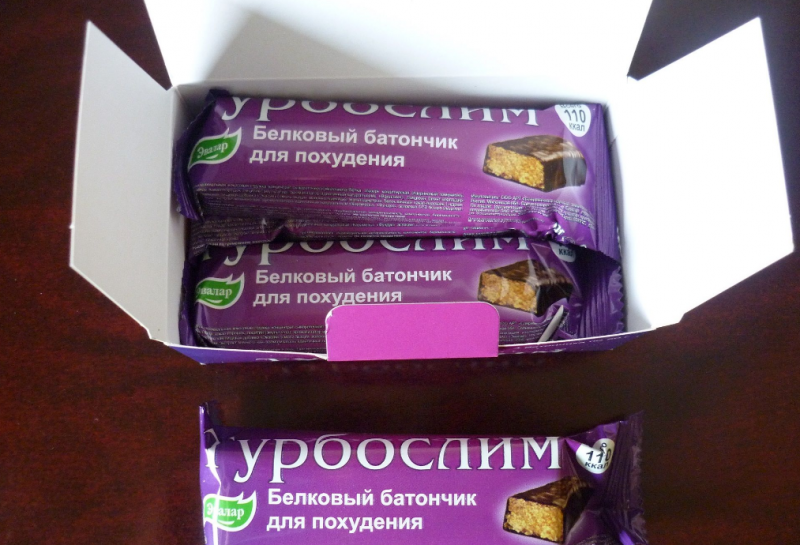The very first fitness bars were invented by the doctor M. Benner as one of the elements of therapeutic nutrition at the beginning of the 20th century. Now they are at the peak of popularity among those who are used to monitoring their weight, lovers of a healthy diet and just people with a busy rhythm of life who need quick snacks without harm to health. What are the benefits of such bars, whether they can be regularly used for weight loss - we will analyze in this article.
Material Content:
Types of Fitness Bars
Bars are presented on the market in a huge assortment - you can easily get confused in the number of names and manufacturers. In general, they can be divided into several categories, which have slightly different composition and characteristics.
Cereal bars are widely known. They are sold in almost every supermarket and usually include pressed cereals with honey, nuts and seeds, small pieces of dried fruits and berries, sometimes with the addition of chocolate or jam. It is a natural organic product, affordable and delicious. Such bars can replace a high-calorie snack or can be used as a substitute for high-calorie sweets during tea drinking. When purchasing such products, be sure to pay attention to the composition - it is better for the figure if it contains not sugar, but honey or a sweetener. These muesli bars are made up primarily of complex carbohydrates and therefore cause a quick saturation effect.
Protein bars can usually be bought at specialized sports nutrition stores or pharmacies. The basis of their composition is protein. Such protein bars are designed for those who monitor their muscle mass and try to increase it.
Energy bars contain the optimal combination of carbohydrate and protein to give a boost of vigor and satiety. This is an excellent option for a safe snack, especially for those who are used to doing cardio and outdoor activities.
Composition, calorie content and BJU
Let's take a closer look at the composition and calorie content of fitness bars in order to have an accurate idea of how useful they can be.
The most common ingredient in bars is cereals, that is, whole grains (barley, wheat, hercules, rice, etc.). They constitute a very useful basis, contain a large amount of fiber necessary for intestinal function, and the presence of carbohydrates in the composition allows you to feel full even after a small portion.
Also, such bars may contain a large number of various additives that affect the taste and beneficial properties. It can be nuts, chopped fruits, seeds, honey. All of these ingredients are beneficial if not overused in large portions.
You should always pay attention to the composition: some manufacturers use terms such as "fitness", "diet" and the like in packaging design only as an advertising move - it is better to abandon cereal bars if you see sugar in the composition, a large number of artificial additives and dyes, fructose, or starch. The same applies to chocolate coated or caramel bars. Such a product will not cause harm to health, but for weight loss they will be completely useless.
The average calorie content of cereal bars is approximately 350 kcal per 100 g. This is a fairly large figure, but we must not forget that with one snack, on average, 1-2 such bars are eaten weighing no more than 50 g, and they charge them with energy for a long time.
There are also low-calorie bars of the so-called "sports chocolate" - they contain about 200-250 kcal per 100 g. They contain a large amount of protein for muscle mass.
Protein bars will be the least nutritious - usually 160 to 200 kcal per 100 grams.
The ratio of BJU in cereal-based bars (per 100 g):
- proteins - 11.3 g;
- fats - 17 g;
- carbohydrates - 31 g.
This ratio can be called approximate: it depends on the composition. For example, in a bar without nuts, the fat content will be less.
In protein bars, the ratio is completely different, because they are designed to receive a large amount of protein by the body.
- proteins - 20 g;
- fats - 6.5 g;
- carbohydrates - 6.4 g.
In some bars, the protein content can reach 45 g, and the amount of carbohydrates is reduced.
Can I use with a diet
There are different opinions about how useful the use of energy fitness bars while following a diet for losing weight, we will try to give this the most robust assessment, taking into account various factors.
The main factor in the use of bars during the diet is moderation.
Replacing regular tea sweets with them or using them as a snack or meal is a good idea.
If there are them regularly and in large quantities, then the desired result is unlikely to be achieved due to a serious excess of calories and the intake of a large amount of carbohydrates.
If your diet is aimed at building muscle, it is better to switch to the use of protein bars, limiting the intake of carbohydrates. Consult with a trainer to find out how much carbohydrate per day is acceptable for you.
The benefits and harms of losing weight
Fitness bars can bring significant benefits during the diet, if you approach their use wisely.
In what situations can they be useful?
- Snack - bars well saturate, energize and allow not to experience hunger for a long time.
- You can replace the bars with one of the meals (it is not recommended to abuse this opportunity so as not to deprive the body of good nutrition).
- Cereal bars are a great alternative to sweets during a tea party.
- Good protection against breakdowns in the diet - one bar can satisfy your hunger and tastes very good.
The composition of the bars is such that they can not bring harm to health, but their calorie content is quite high, and there is a large percentage of carbohydrates in the composition, so abuse of them can only interfere with the process of losing weight.
In addition, not all manufacturers avoid sugar and starch in the composition - it is recommended to pay attention to this when buying.
Control the use of cereal bars - it is best to consume no more than 1-2 such foods per day, ideally in the morning. Always drink them with liquid - unsweetened tea, mineral water or natural sugar-free fruit drinks.
Rating of the best low-calorie bars
A large number of various fitness bars from different manufacturers are produced, let's look at the most useful and suitable in composition for losing weight and those who are used to monitor their health.
One of the most satisfying was the tonic bars from the Leovit company: they contain a large amount of carbohydrates and nutrients. They have a bright sweet taste.
By the naturalness of the ingredients, the Bite fruit and nut bar leads the way. It contains only healthy ingredients of natural origin, without sugar or chocolate.
The EGO bar has good taste and it also contains healthy ingredients such as natural fruits and cereals, honey and others. Contains yogurt and sugar.
Of the protein bars, it is worth noting VPLab High Protein - the protein content in it reaches 40 g, which is significantly higher than in most analogues. Very suitable for those who are engaged in training to build muscle.
Low calorie bars have “Turboslim”. They are suitable for those who monitor the amount of calories consumed.


















